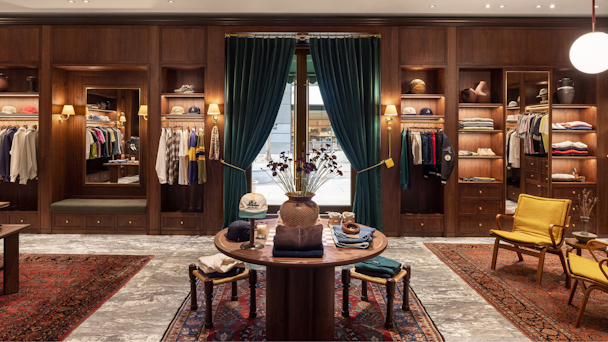Yes, influencers can steer people to your store – if you do this
From Wilko to New Look and Boots, 2023 is the year of store closures. Could influencers be the answer to retailers’ woes? Jamie Ray, co-founder of Buttermilk, thinks so.

/ aime leon dore
There is no denying in the current climate that high street retailers face a grave challenge. There is equally no denying that influencer marketing is going from strength to strength. It has evolved over the last decade, often recreating itself, and it is now a larger and more indispensable part of the marketing mix. So, is there some correlation?
Could influencers be capturing our appetite for one-click purchases from the comfort of our sofa to the detriment of the high street? Potentially, but the situation is far more nuanced and reflects a broader shift in consumer habits combined with macroeconomic pressures.
Advertisement
There are flickers of hope for these retailers, and a blueprint of inspiration is being developed for others to follow - a blueprint that prioritizes experience over transaction; the logic follows that by focusing on the former, the latter will follow.
Nail the experience first
Take, for example, the trending fashion label Aime Leon Dore. Teddy Santis, the founder of the New York-born clothing brand, has created an in-store experience that will make you never want to leave the four walls of its London location. Upon arrival, you are greeted by a thick velvet curtain that leads you into the most beautifully air-conditioned room full of dark walnut paneling and Persian rugs. Want to try something on? The exceptionally attentive staff will lead you down a flight of stairs into a changing room with beautifully soft lighting. In here, you actually feel good about the clothes you are trying on - groundbreaking.
After you have depleted your bank account, head behind another velvet curtain into the cafe, Cafe Leon Dore, to grab a coffee on your way out. It is the kind of shopping experience we all want - but rarely get. Nothing extravagant or outlandish - just simple, well-executed touches that elevate the in-store experience above and beyond the at-home experience. Consumers need an incentive to leave their sofa, so give them one.
Advertisement
Granted, not every retailer has the advantage of selling ultra ‘cool’ items that benefit from a hype train. They can, however, take note of and prioritize the fundamentals of an excellent in-store experience. Make your store a nice place, including everything from the service and the products to the changing rooms and lighting.
So, where do influencers fit into all of this?
If getting the in-store experience right is the first step, the rest will follow. With this approach, Aime Leon Dore has organically attracted a never-ending stream of influencers in-store. Just search ‘Aime Leon Dore London’ on TikTok, and you will be served streams of influencer content that capture not just the brand but the store itself.
Brand association is a pillar of influencer growth, and aligning content with an in-store experience that captures the imagination of audiences helps to spiral engagement. And it isn’t just the biggest names posting; often, it is aspiring nano-influencers too. Once content showcasing an in-store experience is validated with engagement, it starts a flywheel of user-generated content from creators of all sizes.
Suggested newsletters for you
The benefit for retailers does not stop there, digital engagement converts to physical engagement, and consumers will be enticed to visit your store. You only need to take a trip into Soho to witness the queue around the corner for the Aime Leon Dore store. It is a point worth remembering; influencers don’t just sell products; they sell experiences too.
This doesn’t necessarily mean retailers must pour endless budgets into spaces and experiences. The cost of leasing or owning a retail unit can cause irreparable damage to the bottom line. Just look at Topshop’s previous flagship store at Oxford Circus, which Ikea recently snapped up for a cool £420m. Suffice it to say; this is beyond most brands’ budgets.
However, a leaner model has developed that focuses on pop-up experiences. This allows retailers to host physical events, draw crowds, and – most importantly – test the neighborhood for brand-to-consumer fit before committing to a fixed lease.
Pop-up experiences for influencers
Beauty brand Refy recently launched a pop-up wellness experience in Soho, London, inviting all It-girls to visit. Unsurprisingly, the pop-up experience captured the imagination of influencers across TikTok and Instagram, with the content producing the ultimate sense of FOMO for remote viewers. It serves as a great example of how brands can work with influencers to build brand equity in the eyes of consumers.
At a time when the retail industry is grappling with significant challenges, influencer marketing should be seen as an ally rather than a threat. While influencers won’t single-handedly solve all your problems, retailers now have an enhanced responsibility to reshape their approach to crafting customer experiences.
And once they get this part right, influencers can act as a creative vehicle to capture the immersive in-store experience your brand is putting on. This will help not only generate engagement but, more crucially, drive footfall. The future of retail might very well rest on a harmonious blend of real-world experiences and the power of digital influence.

